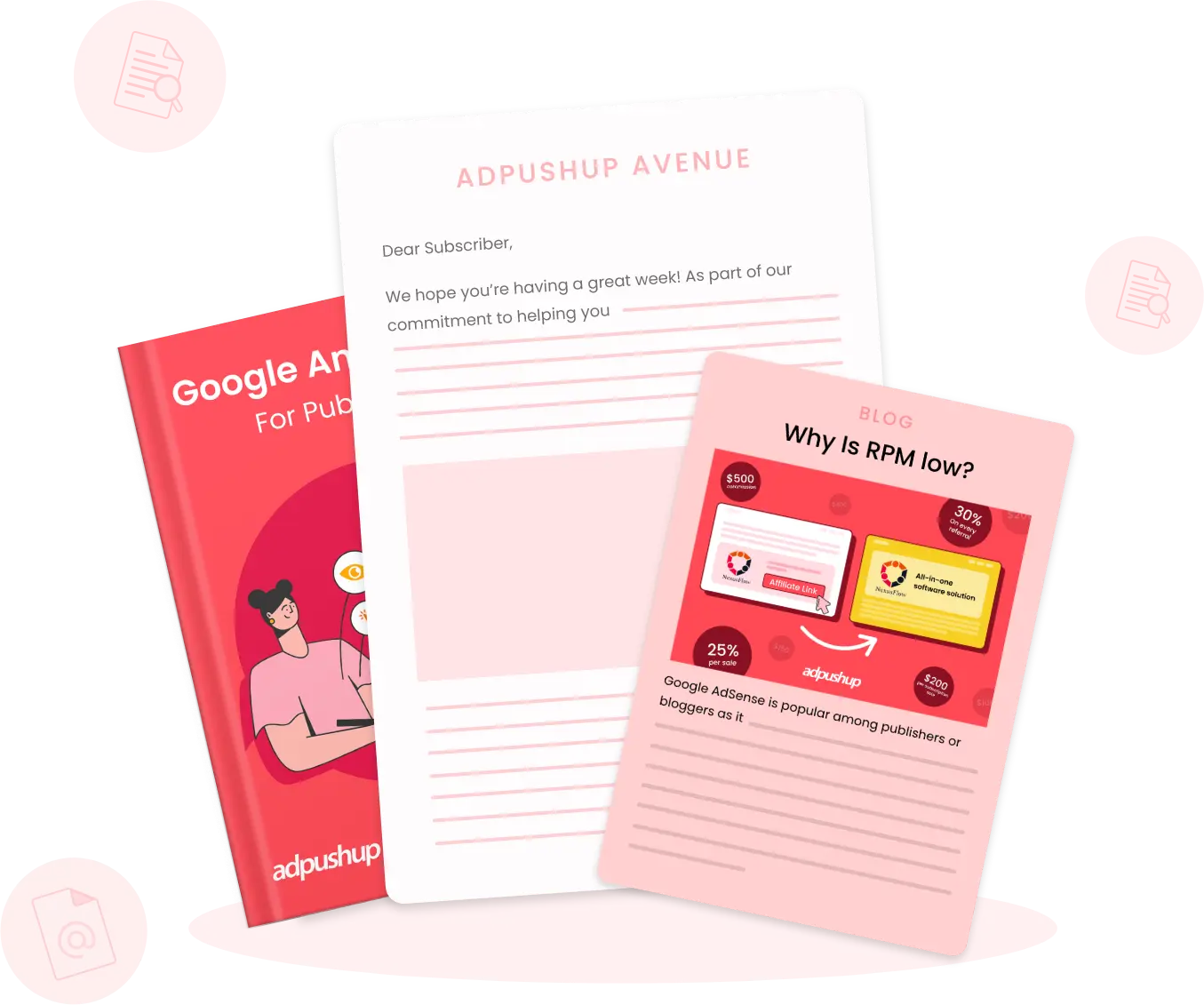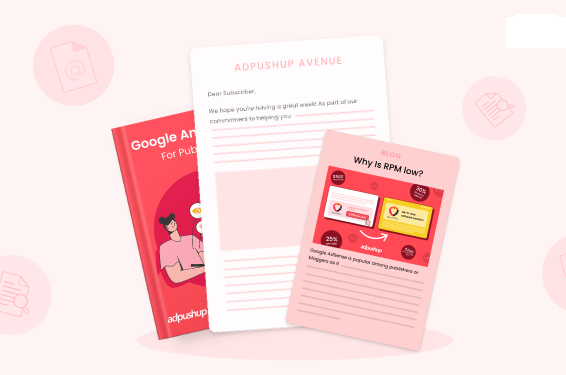Here’s your guide to In App Header Bidding. In this blog, we have covered all the essentials of in app header bidding and what’s in it for publishers.
Many publishers face a harsh reality: their apps, brimming with potential, struggle to capture their full advertising value. In app header bidding emerges as a transformative solution in this dynamic environment.
Not many app publishers make money from the visitors to their apps, despite the fact that mobile app revenue is on track to hit a whopping $201 billion in 2024.
In this blog, we’ve explained why you should leverage in app header bidding to scale your app’s revenue.
What is In App Header Bidding?
Integrated inside an app’s SDK, in app header bidding is a programmatic advertising technique that allows app owners to monetize their content with ads. In app advertising works on the same principles as regular header bidding, which takes place on the websites including video header bidding. The same way, every impression is subject to a single auction, and each time you are awarded the highest offer.
Here’s how the process of header bidding in app looks like:
First off, the publisher’s ad stack and demand partners establish a server-to-server link over which all bids are sent. The key distinction between in-app and online header bidding may be found here: Instead of using an external network like HTTP or HTTPS, this communication happens in-app, directly on your smartphone.
It ensures uniform auction, spurring competition among bidders from various demand sources for each in-app ad impression and eventually choosing the highest offer on each ad impression.
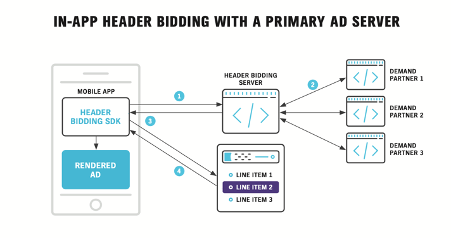
Mechanism of In App Header Bidding
In terms of mechanics, in-app mobile header bidding differs from a traditional header bidding solution. You use a software development kit (SDK) to initiate the auction rather than an embedded piece of code, as you would with web header bidding.
Following that, the concurrent auction takes place.
The highest bidder contends with direct demand for the right to serve the app user who started the app’s loading. The easiest thing will probably be to learn how in-app mobile header bidding operates.
Why In App Header Binding Usually Has the Upper Hand?
Here are some reasons why in-app header bidding is becoming popular:
Transparency
Marketers engage with their DSP and exchange partners to acquire a comprehensive picture of this reach. They aim to estimate, forecast and scale their reach of unique users. But, conventional waterfall models is both imprecise and changeable, making it challenging to make future predictions.
In-app header bidding allows for equal chance and access to premium, high-performing inventory, giving advertisers considerably greater control over the supply that is most effective for them. Buyers may make educated judgments regarding campaign expenditures and bid optimally to secure maximum results by keeping the targeted campaign goals in mind.
Larger Audience
Access to high-quality content and people at scale is a significant issue that many marketers confront. Header bidding tackles this issue. Let’s examine the conventional waterfall approach, in which inventory is transferred from one ad exchange to another in accordance with historical price (eCPMs).
The more expensive stock is taken out of the supply pool with each jump down the cascade. In this case, it is quite likely that advertisers affiliated with an exchange that is positioned lower on the waterfall model won’t have access to the same amount of inventory or user scale that they would want to see or for which they would be ready to pay more.
In a header bidding environment, each exchange has the chance to submit a bid in response to each and every ad request. Platform partners, such as demand-side platforms (DSPs), may therefore, access all of a publisher’s inventory as well as the people who are consuming it. As a result, advertisers are in a better position to target more individuals throughout the inventory pool they select.
Disintermediation
Since waterfall models call demand partners in a hierarchical manner, advertisers are, by default, handled differently for each successive ad request. A marketer will only be able to reach a user if the historical average eCPM of the ad network/exchange they deal with is comparatively greater than the other networks or exchanges.
This is because real-time bidding for a single user or impression is extremely competitive. Because every user or impression opportunity is solely evaluated based on a prior denomination, such a system is wasteful. This leads to negative feedback loops where advertisers may incorrectly assume that inventory is far more expensive than it actually is, as well as unseen competition in the form of previous eCPMs.
Header bidding enables all partners to have equitable access to premium, high-performing content, regardless of their prior engagement. Through the use of real-time bid answers from advertisers, all auctions are harmonized and cleared. The people and impressions that marketers value the most may now be reached through a genuine, equitable system.
Web Header Bidding vs. In-App Header Bidding
In-app header bidding has emerged as a fair and transparent method of selling and purchasing advertising space. It enables all buyers to simultaneously bid on identical ad inventory, and the highest bidder always wins as opposed to the conventional in-app advertising cascade technique.
This method’s workflow is quite similar to website header bidding. Header bidding wrappers, which are JavaScript elements, are responsible for bid evaluation, ad server communication, and ad calls to the demand partner, are used for website header bidding.
In the end, the real-time auction is always won by the highest bidder, whose advertisement appears on the publisher’s page.
Also Read: Improved Header Bidding Support in GAM
Differences Between Header Bidding and Unified Auctions
Unified auctions and header bidding have a common motive, and that is maximizing the demand inventory. However, their functionality is different and the implementations as well.
Header bidding involves a client-side auction where multiple demand partners are called simultaneously through a wrapper in the website’s header. The collected bids are then sent to the ad server.
On the other hand, unified auctions are inclined towards the server side and all of the demand sources bid simultaneously for the ad inventory. The whole process is managed by the ad server.
Unified auctions lead to faster loading times, process one bidding session per impression, and combine all types of demand sources to simultaneously compete for every ad session. Example: Google Exchange Bidding that runs on Google AdX.
And, when it comes to header bidding, it selects bids from multiple auctions, provides more control to publishers over the bidding process, and requires continuous optimization and monitoring. The best header bidding example that can be given here is the official website of The Washington Post.
Top Benefits of In-App Header Bidding for Publishers
In-app header bidding has been playing a vital role in revolutionizing the way publishers maximize their ad revenue and streamline their operations. Below, you’ll find more of its benefits.
1. Maximized Ad Revenue
Most importantly, in-app header bidding helps in boosting the ad revenue. With the help of in-app header bidding, publishers can offer their ad inventory to more advertisers. Then, these advertisers pay well to reach their target audiences.
2. Increasing Number of Buyers Mean Higher Bid Matches
As buyers are already paying more to target their audiences, it increases the chances of matching buyers and users to secure those higher bids. Moreover, in-app bidding increases the number of bids showing more ad impressions to potential buyers, which eventually increases the overall revenue.
3. Increased Fill Rates
The fill rate is directly proportional to the number of demand partners participating in auctions. So, being a publisher, you can post as many pop-under ads on your website as you want because these ads don’t consume much space.
4. Beats the Waterfall Method
The waterfall method relies on historical data, but in-app header bidding relies on real-time data. This difference proves that the waterfall method is less effective, as top networks have lower bid values. On the other hand, in-app header bidding creates a fairer system and gives media buyers access to better inventory.
5. High Chances of Remarketing Cookie Matches
Cookie matches allow the ads to be focused on a specific set of audiences, which ensures minimum wastage in ad campaigns. This results in higher CPMs for publishers. In-app header bidding enhances the cookie-matching process. So, when you introduce a variety of demand partners, the chances of cookie matching automatically increase.
6. Minimizing Manual Effort
When compared with the traditional waterfall method, in-app header bidding requires less labor or manual effort as there’s no need to run reports, analyze results, and tweak demand sources.
7. Improved Quality of Ads
As advertisers won’t hesitate to pay more so that their ads are displayed to their target audience, it increases competition and eventually, improves the ad quality.
8. Enhanced UI
In-app header bidding creates no latency issues and never impacts the loading time. This increases the user experience and make the users to stay on your app for more time.
How to Set Up In App Header Bidding?
Before you proceed to implement in-app header bidding, make sure that you have a mobile app compatible with Android and iOS and available on the respective app stores.
Then, you need to follow these steps to set up in-app header bidding for your app:
- Choose a header bidding solution.
- Integrate the required header bidding SDKs that may include Prebid SDK, Google IMA SDK, and more.
- Set up the Prebid server and your primary ad server.
- Set up demand partners.
- Set up your ad inventory.
- Start testing and optimizing.
Note that, you should know how these elements operate together. Moreover, don’t proceed with the technical setup method if you don’t have any ad-tech experience, tech knowledge, and access to the necessary platforms.
How to Choose an In App Advertising Solution?
Choosing which SDKs and mediation partners to utilize when implementing header bidding in your app is the difficult part. Mobile app publishers have access to a plethora of mediation partners and SDKs, each of which claims to have its own proprietary ad technology that will produce superior results. None of these can be accurate.
How do you decide then? Choose a companion who will take care of most things for you. Certain platforms do really have access to reliable demand sources. Others provide a solution that is more or less turnkey and can prevent technical difficulties. However, the platform that does it all is the one for you when you find it.
Conclusion
In 2019, it was anticipated that digital ad spending will surpass that of conventional media, including television, for the first time (including both mobile web and in-app)
Budgets for in-app advertising frequently include a bigger part for programmatic tactics.
In-app funds are typically allocated 66% to programmatic direct or open exchange methods and 34% to direct buy. As a result, over 80% of all programmatic display expenditures in the US and UK now flow to mobile, accounting for the majority of all worldwide programmatic ad spend.
The largest prospects are being seen in programmatic in-app as consumers migrate their spending to mobile platforms. 30% of buyers, according to a recent study, intended to increase their programmatic direct in-app spending by more than 10% in the upcoming year.
As mobile advertising grows, app publishers that want to expand successfully and get a share of the rising brand revenues will turn to programmatic selling via in-app header bidding.
Frequently Asked Questions: In App Header Bidding
In App Header bidding works on the same principles as header bidding for websites. Instead of relying on the website header in the source code, in app header bidding utilized SDK to generate ad requests for the publishers’ app.
In ad bidding, “app” refers to mobile apps like games or social media. In-app bidding is an auction for ad space within those apps, deciding which ad users see. It helps app creators make money and advertisers reach phone users.
Bids enable people to buy products and services at auctions and other places. It is a competitive procedure in which two or more entities strive to outbid each other by increasing the price they are prepared to pay to get the asset.
Buyers may see a publisher’s whole inventory with a header bidding code, giving them a greater knowledge of their reach. It also provides buyers access to additional audiences and a better probability of delivering campaigns because bid requests may be issued for every possible impression.
It differs from standard real-time bidding (RTB) auctions in that, In place of each ad exchange holding their corresponding auctions at a considerably less priority in the publisher’s ad server, in header bidding, all the ad exchanges are allowed simultaneously at the highest priority in the ad server.

Deepak has a keen eye for detail and a deep understanding of the ad tech landscape. Whether it’s through in-depth articles, thought-provoking insights, or compelling storytelling, he’s dedicated to helping people navigate the complex world of ad tech with the simplicity of his words.
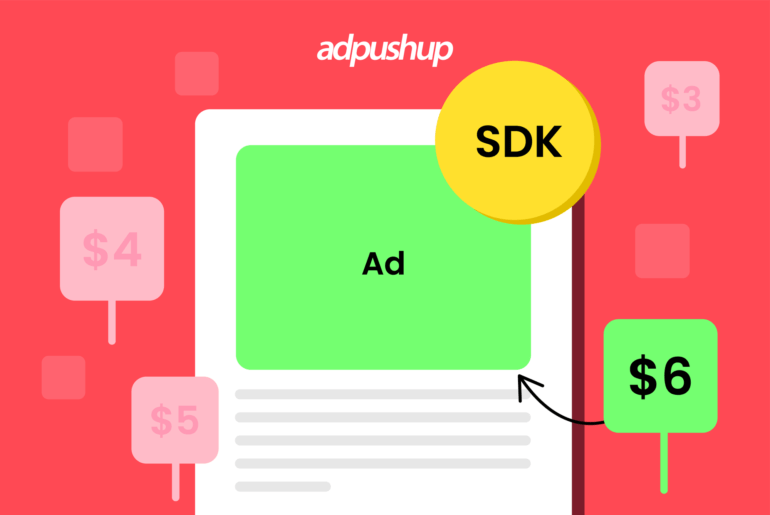
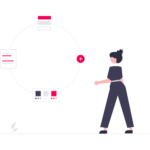
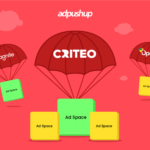
![Top 12 Ad Networks in India Every Publisher Should Know [2024 Edition] Indian Ad Networks](https://www.adpushup.com/blog/wp-content/uploads/2019/09/undraw_Note_list_re_r4u9-270x180.png)


